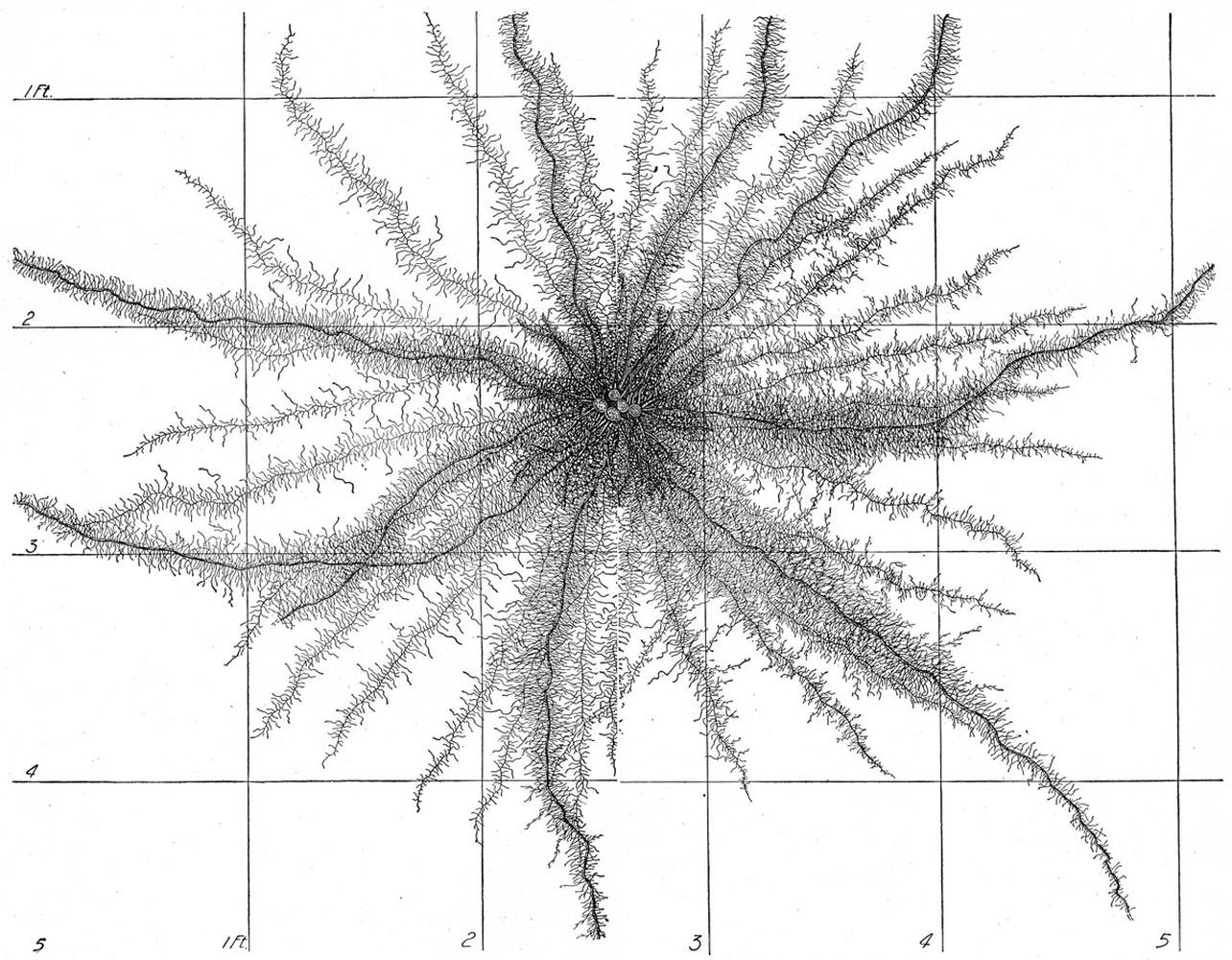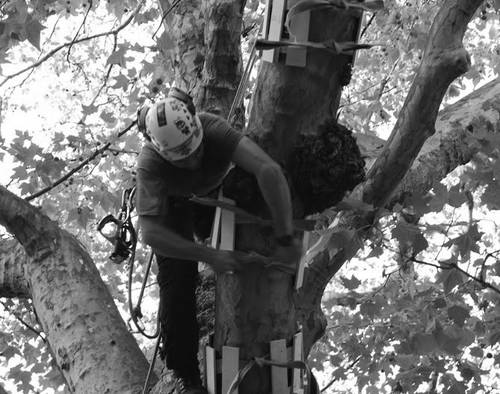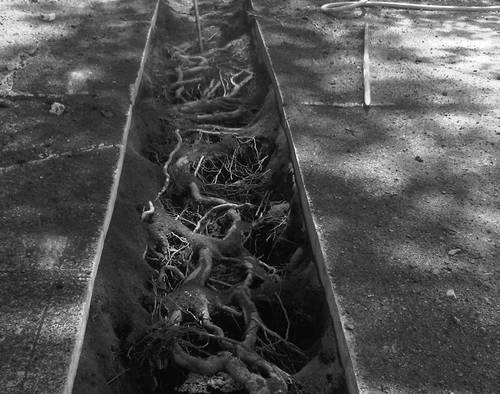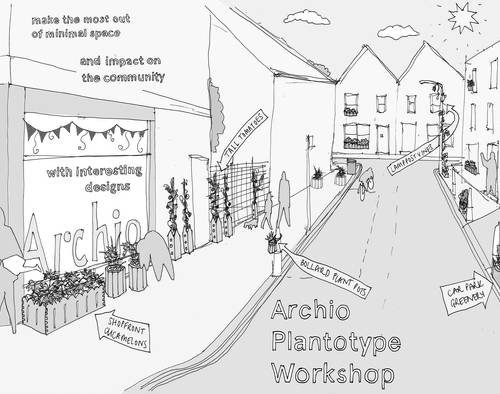How Close Can You Build To Trees - Part 2
July 2015
This is the second part of a three-part article about building around trees. The first part of the article looked at ways in which trees can be damaged by construction, and this second part explores how buildings should be positioned to avoid damaging sensitive root systems.
Root protection areas
To avoid damage to the root system you first need to know where the roots are. Given that soil is quite tricky to see through this needs to be estimated by looking at the above ground characteristics of the tree to give a Root Protection Area (RPA), which is the area that should be left undisturbed around a tree to allow it to continue to be viable.
For a single stem tree the RPA is calculated by plotting a circle 12 times the radius of the stem (trunk) diameter of the tree. This circle area only really holds if the tree is in the middle of a flat field with perfectly homogeneous soil and drainage, and in most situations the shape of the RPA will be affected by surrounding external factors. In practice RPAs are rarely round, but are more often ovoid, or even triangular in shape, which in my view makes for a lovely tree plan drawing if nothing else. The calculation of RPAs gets significantly more complicated for multi-stem trees and takes the skill and experience of a qualified arboriculturalist.
Some factors that might affect the shape of an RPA include: the presence of below ground obstructions such as building foundations or roads; historic damage; the location of other trees; soil conditions. Again, judgement as to how these will affect the shape of the RPA requires input from an arboriculturalist.
Working around trees
On both large and small development sites where trees might need to be retained it is important to carry out a tree survey and produce a tree plan showing RPAs as early as possible in the project, as these will often have an impact on the site layout.
Crucially when carrying out the site assessment an arboriculturalist will grade trees either A, B, C or U. The letters A to C describe the quality of the trees, with an A-grade tree being a tree with an estimated life expectancy of more than 40 years, a B-grade more than 20 years, and a C-grade more than 10. A U-grade tree has a life expectancy of less than 10 years, and it would normally be recommended that such a tree be removed. Similarly under many circumstances C-grade trees are given limited importance and can usually be removed. It is useful to know that it is much more likely that a tree with a Tree Preservation Order can be removed if it is poor quality.
The removal of poorer quality trees can dramatically change the developable area of a site and will certainly impact on where foundations and other underground works, such as service runs can be located.
No way through the forest
There is some flexibility in encroachment into RPAs and as a rule of thumb up to 20% of the RPA can be built over. Nonetheless on occasion it will either not be possible or not be desirable to remove trees from a site. In the final part of the article I discuss some techniques that can be used to overcome the issues if building close to trees is unavoidable.

Drawing of sweet corn roots by John E Weaver from 1927.


